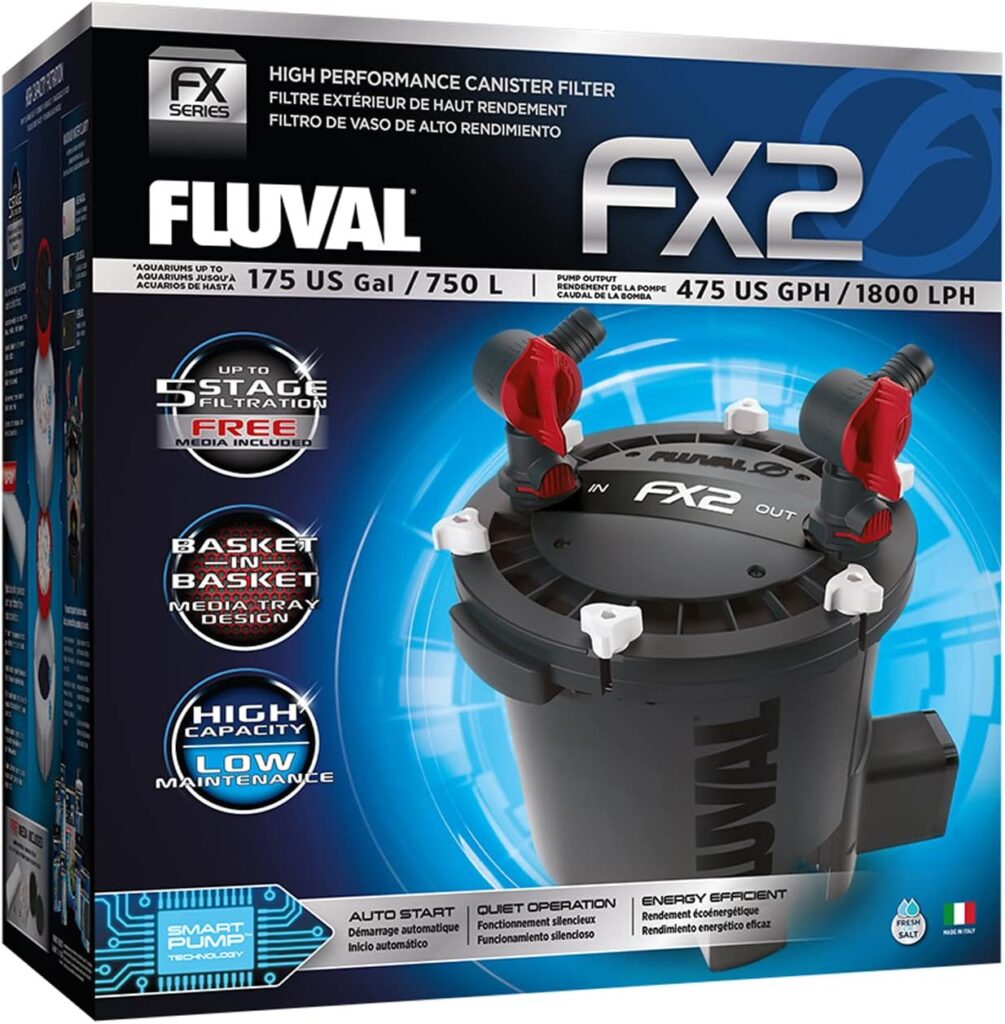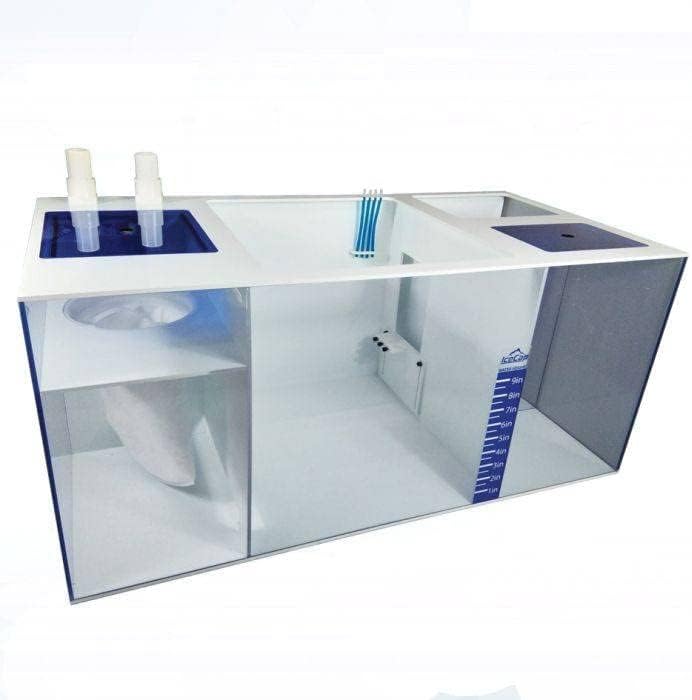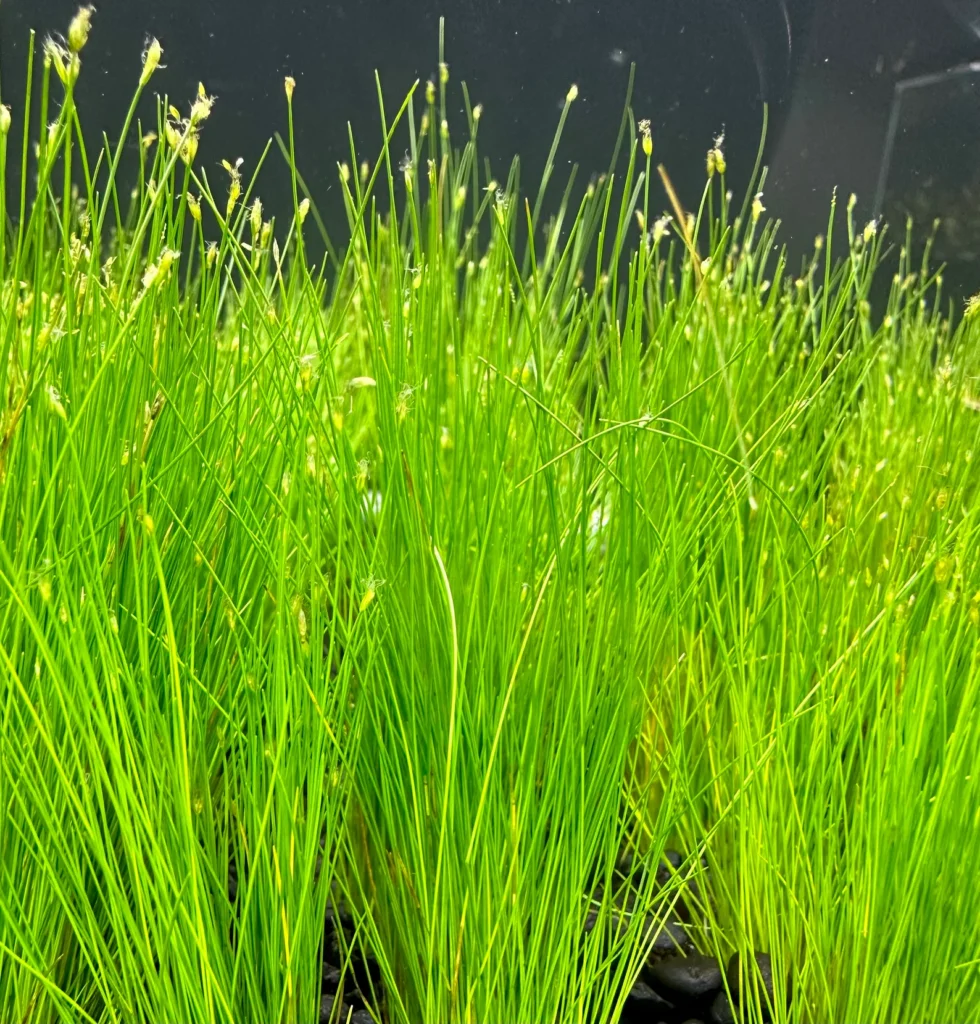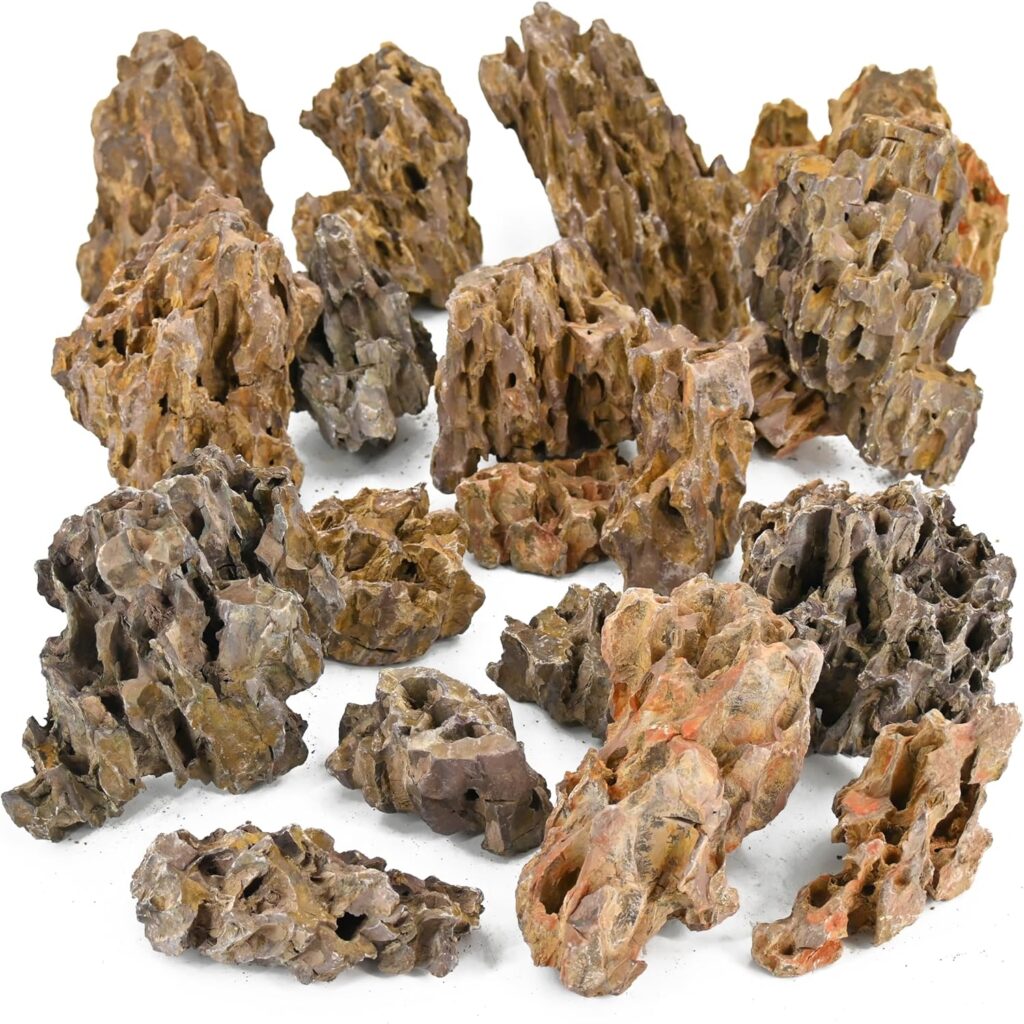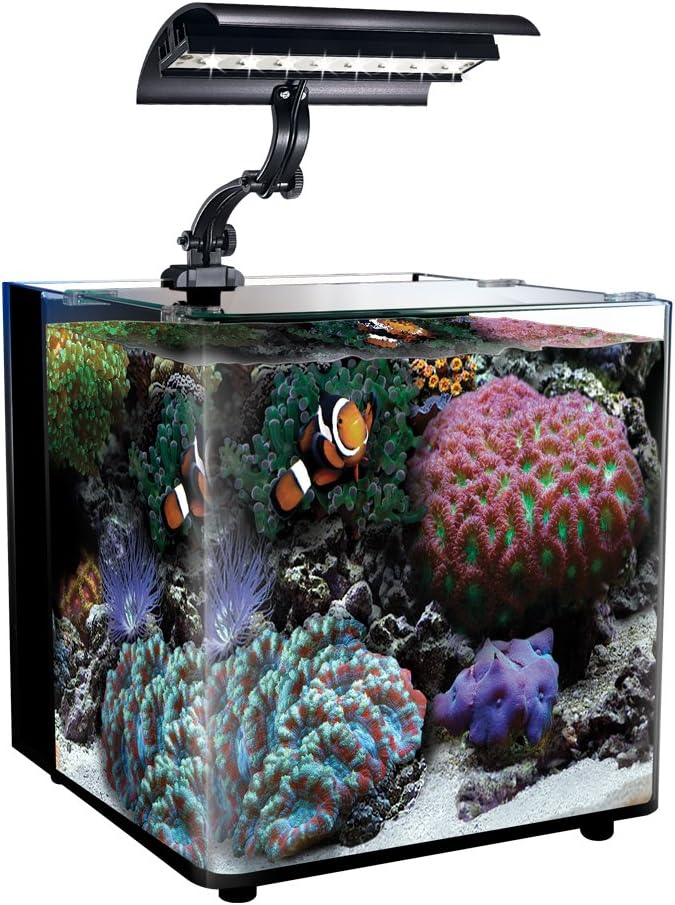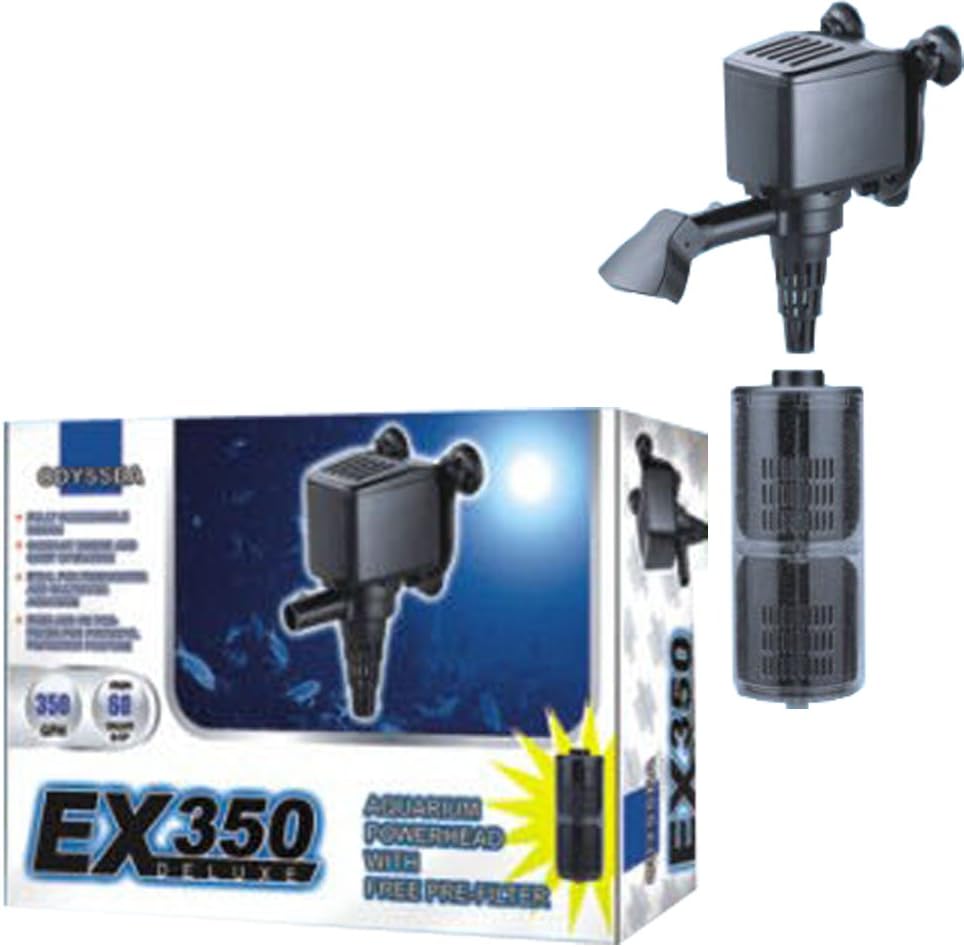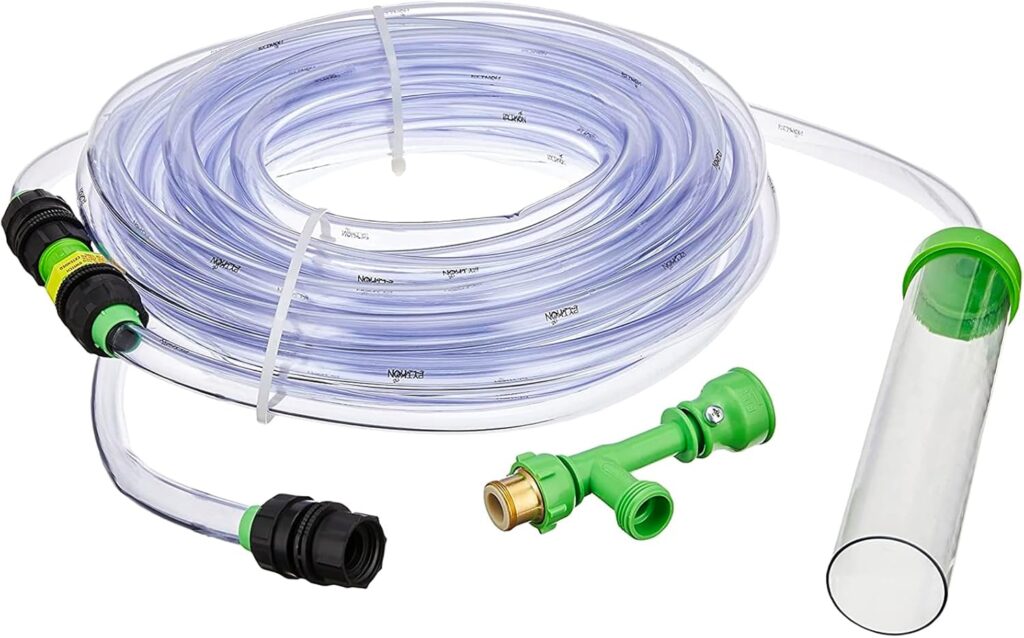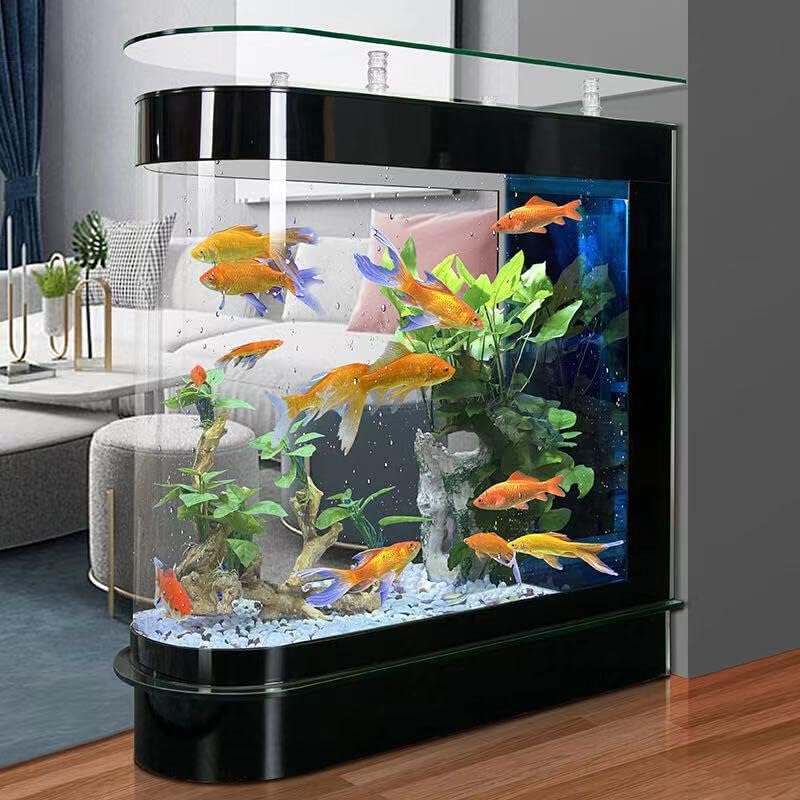
As someone who’s been passionately involved in aquascaping for over a decade, I’ve had the privilege of witnessing the evolution of corner fish tanks. These unique, triangular-shaped aquariums have moved from being a niche product to coveted centerpieces, drawing attention from both seasoned hobbyists and newcomers to the hobby.
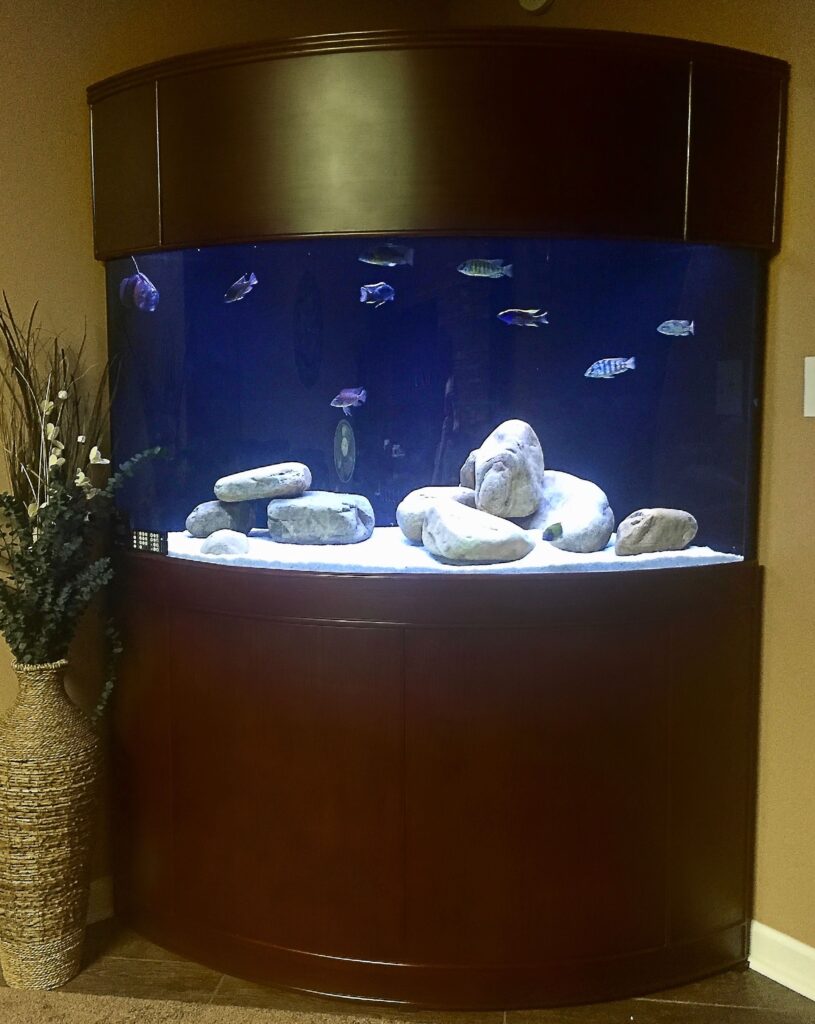
In this guide, I’ll walk you through everything I’ve learned about these versatile tanks—from design tips to advanced techniques—to help you make the most of these beautiful, space-saving aquariums.
The Appeal of Corner Tanks
What’s so great about corner fish tanks? It’s simple: they make use of otherwise unused space. They tuck neatly into room corners, providing a unique, panoramic view of your aquatic world. This makes them perfect for smaller homes or apartments, where floor space is often at a premium.
But it’s not just about saving space; corner tanks can also become stunning focal points in your room. Their unique shape and ability to showcase your aquatic ecosystem from multiple angles make them stand out, whether you’re admiring it from across the room or up close.
Double Corner Reef Tanks
What to Think About When Choosing Your Tank
Tank Size and Shape
Corner tanks come in a variety of shapes, usually with 45° or 60° angles, and sizes ranging from small nano tanks to large, eye-catching setups. The size you choose will depend on both your available space and the kind of aquatic environment you want to create.
My 54 Gallon Corner Fish Tank
Bigger tanks tend to offer more stability in water parameters, giving you more flexibility in choosing fish and plants. However, smaller tanks can be just as rewarding, particularly if you love the challenge of creating intricate, detailed aquascapes.
Glass or Acrylic?
When it comes to material, you’ve got two main options: glass or acrylic. Both have pros and cons, so the decision often comes down to your personal preferences and priorities.
- Glass:
- Pros: Clear and scratch-resistant, keeps its appearance over time.
- Cons: Heavier and more prone to breaking. Limited in shaping options for corner tanks.
- Acrylic:
- Pros: Lighter, shatter-resistant, and can be molded into more complex shapes.
- Cons: More prone to scratching and may yellow over time. Often more expensive.
If you want something that can handle unique angles and curves, acrylic might be the better choice. But if durability and clarity are your top priorities, you might lean toward glass.
Filtration and Equipment
One of the trickier aspects of corner tanks is fitting the right filtration and equipment. Their triangular shape can make it challenging to place equipment without disrupting the look of your aquascape. But don’t worry—there are plenty of options to ensure your tank stays clean and healthy.
- Canister Filters: Great for larger setups, these external filters can be tucked away in the cabinet below the tank. They offer strong filtration power and can handle the demands of bigger tanks.
Fluval FX2 1 Year Later – A Great Aquarium Canister Filter
- Hang-on-Back (HOB) Filters: Some brands offer HOB filters specifically designed for corner tanks, fitting neatly along one of the back panels.
- Internal Filters: For smaller setups, compact internal filters can be placed inside the tank.
- Sump Systems: If you’re going big, a custom sump system will give you excellent filtration and allow you to hide your equipment.
IceCap Reef Sums: Versatile. Spacious. Accessible.
Aquascaping Your Corner Tank
The shape of a corner tank is a blessing for aquascapers. It opens up new possibilities for creating depth, visual interest, and stunning focal points. Here are some tips to help you make the most of that unique space.
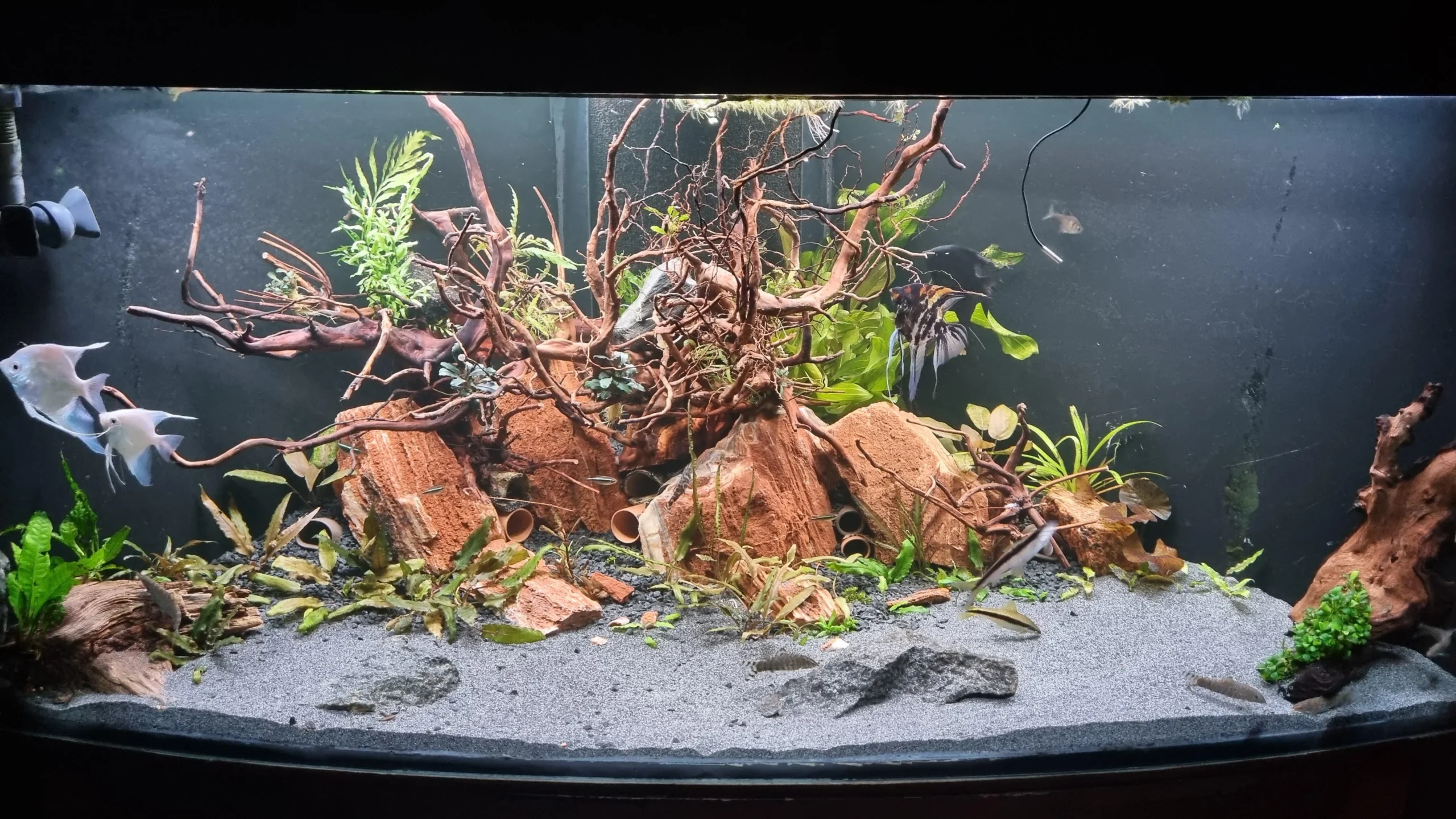
Create Depth with Layers
Use the angles of the tank to give the illusion of depth. Start by placing taller plants or hardscape elements toward the back corner and gradually decrease the height as you move forward. This technique creates a sense of perspective that makes your tank appear larger.
Try plants like Vallisneria or Amazon Swords at the back and transition to mid-height plants like Anubias or Java Fern in the middle. For a beautiful carpet effect, you could use Dwarf Hairgrass or Monte Carlo at the front.
How to Grow and Care for AMAZON SWORD Aquarium Plant
Focus on Focal Points
The tank’s apex—where the back walls meet—is naturally the focal point. Use this spot to create a standout feature, like a dramatic piece of driftwood or a carefully arranged rock formation. This could be a cluster of dragon stone or ohko stone, sculpted to look like a mountain peak or a cliffside.
$350 DRAGON STONE Planted Aquarium Aquascape
Layered Landscapes
One of the great things about corner tanks is the ability to create layers within your aquascape. Think of it like building a landscape on a slope—use different substrate heights, rocks, and plants to mimic natural terrain. This can provide different niches for fish and invertebrates while also adding visual complexity.
Embrace Negative Space
While it’s tempting to fill every inch of the tank, leaving some areas open can create a beautiful sense of contrast. It also gives your fish room to swim. Consider leaving the foreground open and letting your plants fill in the back. This way, you create a “viewing window” that invites you to explore the depths of your aquascape.
Lighting Your Corner Tank
Lighting a corner tank can be a bit tricky because of its angles. To avoid harsh shadows or uneven lighting, consider these options:
- Multiple Light Sources: Instead of one large fixture, use two smaller lights. This allows you to customize the intensity of the light for different areas.
- LED Strips: These flexible strips are perfect for corner tanks. You can run them along the edges of the tank to provide even, customizable illumination. Some advanced LED systems even let you adjust the color and intensity to mimic natural day and night cycles.
How to setup Marineland Hidden LED Lights on your fish tank
- Adjustable Fixtures: Opt for lights with adjustable arms to direct the light exactly where it’s needed, ensuring that no area of the tank remains too dark.
Water Flow and Circulation
Water movement is essential for maintaining a healthy environment. In corner tanks, the unusual shape can lead to “dead spots” where water doesn’t circulate as efficiently. To prevent this, you can:
- Powerhead Placement: Place one or two powerheads in the back corners, angled slightly toward the center. This helps create a gentle whirlpool effect that reaches every corner of the tank.
What Does a Powerhead Do in an Aquarium?
- Custom Plumbing: For larger tanks, consider a custom plumbing system with multiple return outlets or spray bars along the back walls.
- Surface Agitation: Make sure the surface of the water is gently agitated. This encourages gas exchange, which is crucial for oxygenating the water.
Maintaining Your Corner Tank
Corner tanks do require a little more attention to maintenance, mainly due to their shape. Cleaning, water changes, and equipment checks need to be approached with care:
- Specialized Cleaning Tools: Invest in angled algae scrapers or flexible siphon hoses to reach those deep corners without disturbing your aquascape.
- Water Changes: Corner tanks may require more frequent water changes, around 15% more often than traditional tanks. Using a Python No Spill Clean and Fill system makes water changes quicker and easier.
How To Use the Python No Spill Clean & Fill
- Check Equipment: Regularly inspect the silicone seams and joints for any signs of wear. Uneven pressure can lead to leaks, so make sure your tank is well-supported.
Choosing the Right Fish
The fish you choose for your corner tank should complement the unique layout. Some species are perfect for the angles and curves of these tanks:
- Schooling Fish: Tetras like Neon Tetras or Harlequin Rasboras can create beautiful, fluid schools that dance through the angles of the tank.
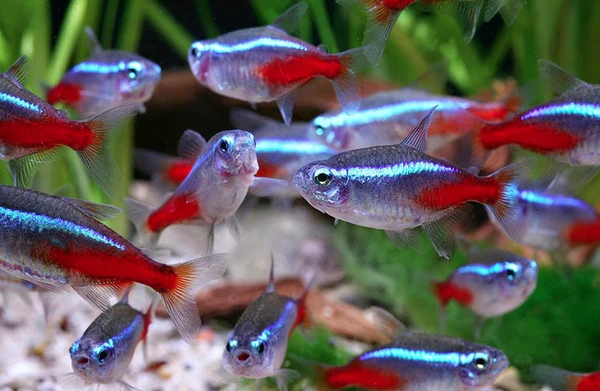
I Kept A Betta Fish With Chili Rasboras…Here’s What Happened!
- Vertical Swimmers: Fish like Angelfish or Discus are perfect for taller corner tanks. Their vertical bodies contrast beautifully with the tank’s shape.
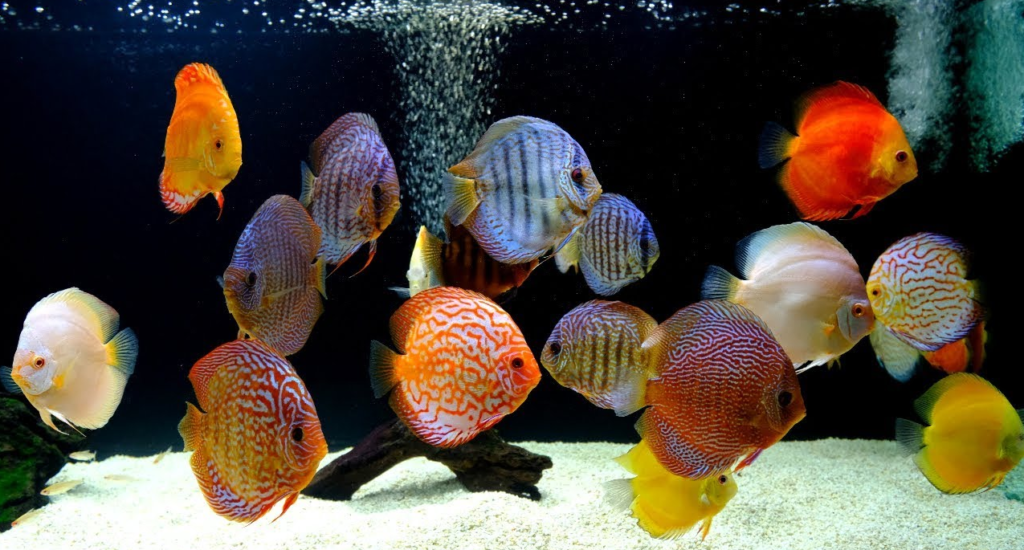
Mastering Your Discus Tank: Key Lessons After 3 Years
- Bottom Dwellers: Fish like Corydoras Catfish or Kuhli Loaches provide interest at the bottom of the tank, helping to keep the substrate clean.
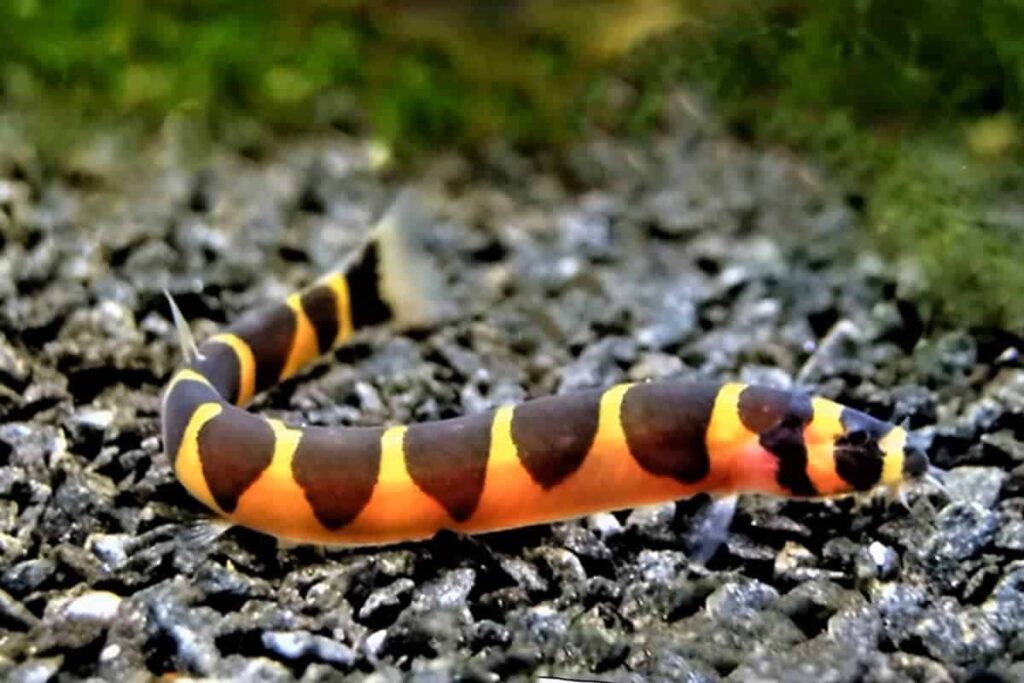
Kuhli Loaches – Best Beginner Oddball Fish?
Taking Your Corner Tank to the Next Level
Once you get comfortable with your corner tank, you can explore advanced techniques to elevate your setup:
- Multi-Level Aquascaping: Create multiple levels within your tank, each with its own ecosystem. Think of it like a terraced garden, with different plants and fish at each level.
- Integrated Furniture Design: Consider working with a carpenter to design custom furniture that incorporates your corner tank. A sleek, custom-built cabinet can hide equipment and seamlessly integrate the tank into your living space.
- Automated Systems: Invest in smart technology to make maintenance easier. Automated feeders, dosing pumps, and lighting systems can reduce the effort required to maintain a healthy tank.
Kai’s Floating Bowfront Saltwater Reef Aquarium Tank Tour!
Key Takeaways
Corner fish tanks are an excellent choice for maximizing space and creating an eye-catching focal point in your home. With the right design, equipment, and maintenance, they can become a true work of art.
Remember to be creative with your aquascaping, choose the right fish, and consider advanced techniques as you grow more confident in your skills. Whether you’re a beginner or a seasoned enthusiast, the journey of mastering a corner tank is both rewarding and endlessly inspiring.
Happy fishkeeping!


